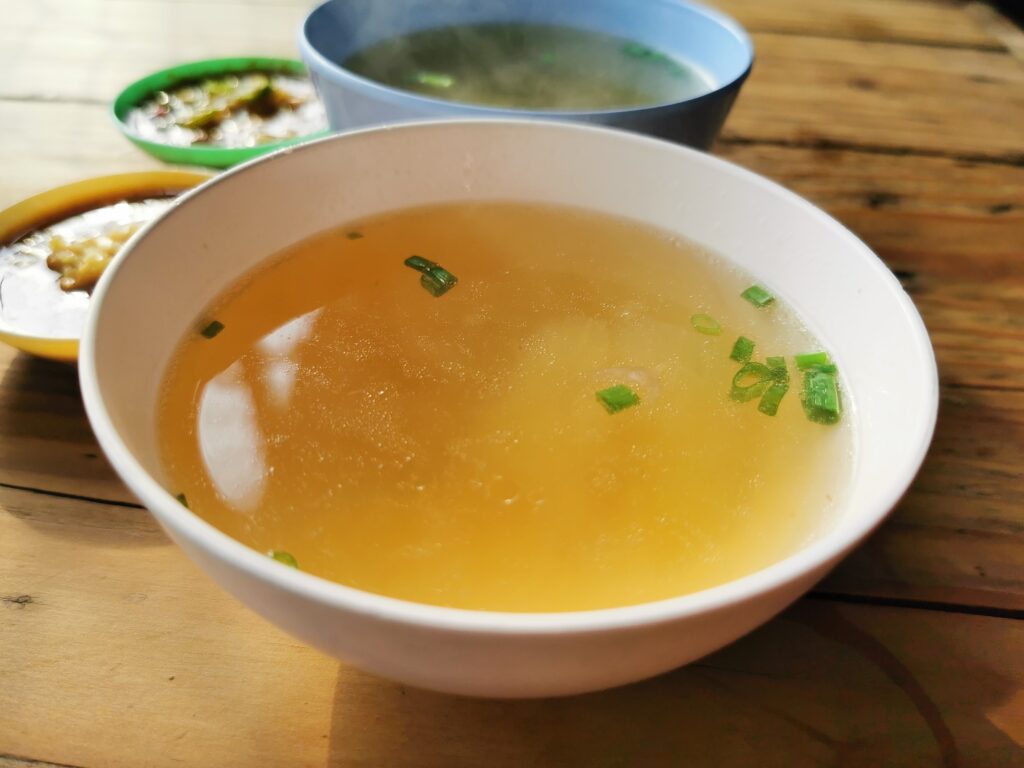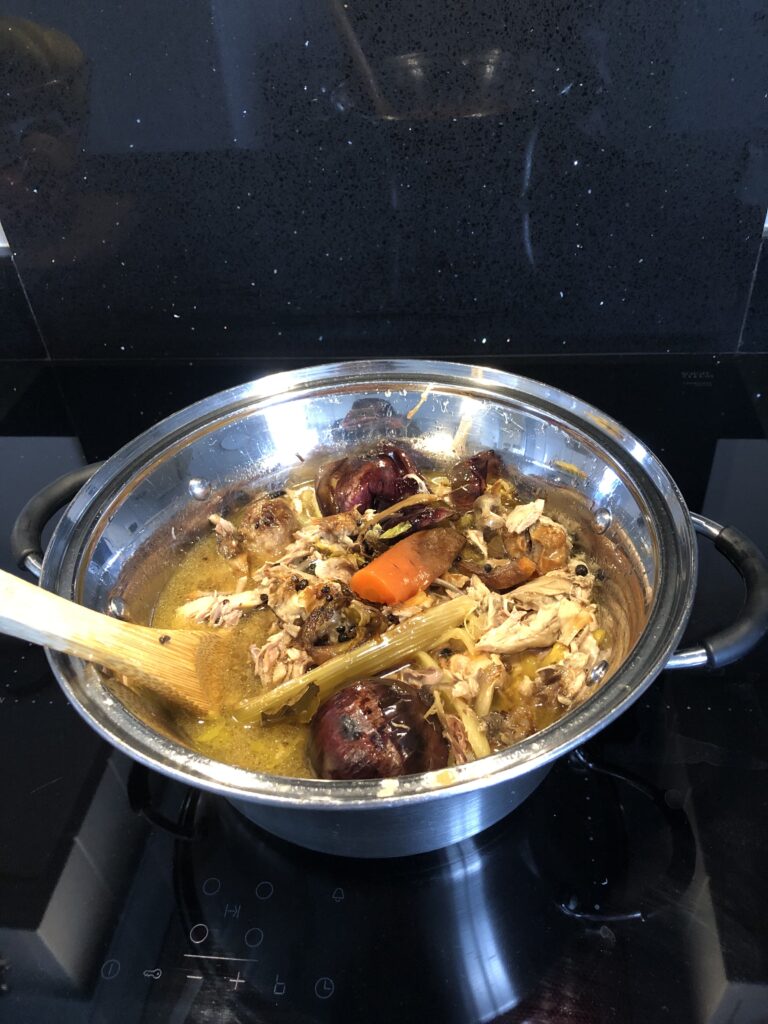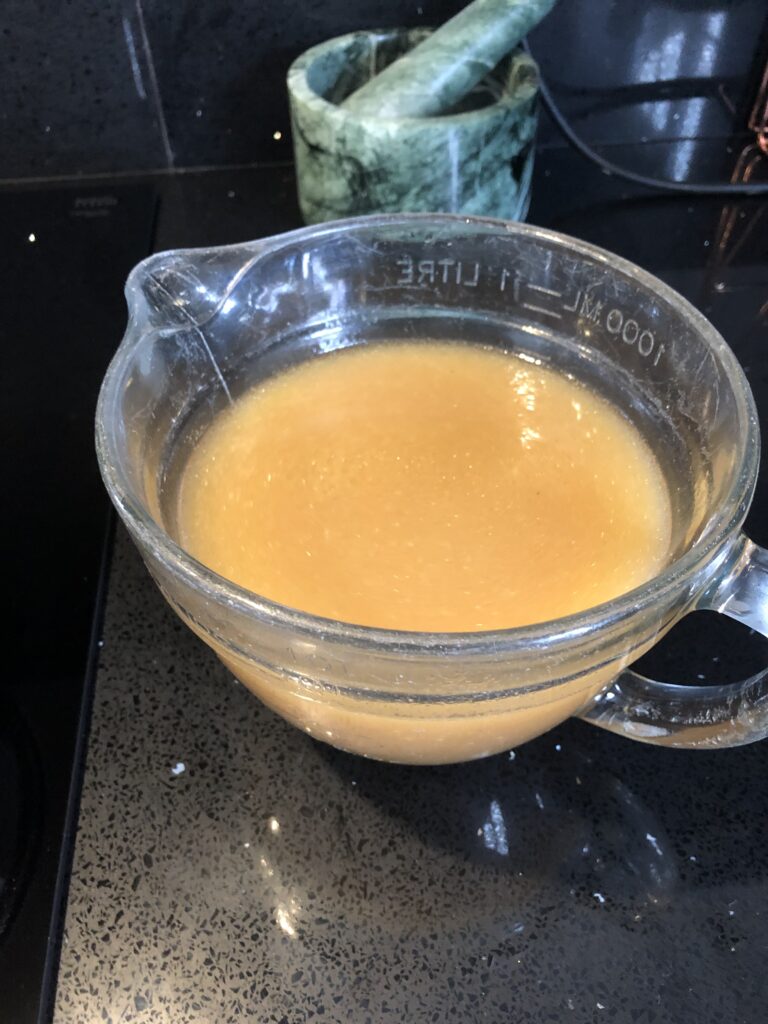
Benefits of Bone Broth.
What is Bone Broth?
Bone broth is a liquid made from slow cooking, between 8 and 24 hours, bones and connective tissue of animals such as cows, chickens and even fish.
This broth can contain important nutrients as bones are rich in vitamins and minerals such as calcium, magnesium and phosphorus. The connective tissue provides the body with natural compounds from cartilage and collagen. The bone marrow is rich on iron, vitamins A and K, fatty acids, selenium, zinc and manganese.
Advocates of bone broth suggest that consuming nutrients in this way makes them easier for our bodies to digest.
Claimed benefits of Bone Broth
- Relieves joint pain
- Detoxify the liver
- Weight loss
- Aid wound healing
- Support the digestive system
- Balance hormones
- Improve sleep
- Improve immune function
Joint pain
I say claimed benefits as there is no published research. The benefits could come from the protein collagen which can break down into gelatin in the body which is important for joints. Bone broth also contains glucosamine and chondroitin which can decrease joint pain and lessen symptoms of osteoarthritis.
Inflammation
It may reduce inflammation and heal the gut. The amino acid Arginine, in particular, may help fight the inflammation associated with obesity.
Digestion
Some amino acids, which are the building blocks of Protein, in bone broth may be helpful for digestion. The amino acid in gelatin, glutamine, helps maintain the function of the intestinal wall. This may help digestive conditions such as a Leaky Gut. Leaky Gut, which happens when the barrier between your gut and bloodstream becomes impaired, is associated with several chronic diseases. A recent study shows that people with inflammatory bowel disease tend to have lower levels of some amino acids in their bodies.
Weight loss
It is thought that bone broth may support weight loss by providing many nutrients in a low-calorie way along with protein which keeps the body satisfied for longer.
How to make Bone Broth
You can collect bones and store them in the freezer, adding to the collection as you have more until you have enough and are ready to cook them. If you don’t generally have bone-in meat or cook whole chickens you can ask your local butcher or farmers market if they have any or can save some for you.
I tend to use my chicken bones after a Sunday roast. I pop all the leftovers into my slow cooker, I add:
- Carrots
- Onion
- Celery
- Bay leaves
- Peppercorns
- A slug of cider vinegar – which helps leach the goodness from the bones
I then pour in enough filtered water to cover the ingredients, give it stir and set the cooker for the longest time. I will then leave this to keep warm at the end of cooking and then cool down to room temperature, approx 12 hours in total.

I decant everything through a colander, saving the liquid and discarding everything else, you may want to strain through a finer sieve after or a muslin. You can use this liquid straight away or let it sit in the fridge for up to 5 days, you will be able to remove any fat settled solid at the top. If you are not using within this time, decant into smaller quantities and freeze for up to three months.

I use the broth as bases for soups and sauces.
A note on quality
You can buy bone broth from supermarkets and health food shops. It is uncertain how many nutrients each batch will contain but when I make my own I always try to buy the best quality meat available (or I can afford at the time) for animal welfare and health reasons. If I know I am making bone broth I will spring for an organic chicken as I want to ensure the animal has consumed a natural diet and hasn’t been routinely vaccinated.
Plant-based Broths
Obviously not everyone is going to want to consume animal bone broth. This doesn’t mean you have to miss out on valuable health-giving nutrients. Plant-based broths are available to buy but again you can make your own quite easily and cheaply and be in control of the contents, therefore, tailoring them to your personal health needs.
Try simmering the vegetable base (for 1-2 hours) adding garlic, dried mushrooms and miso paste together with a range of herbs and spices to your liking. You can also add nutritional yeast flakes which are available from most health food stores to ensure you look after your vitamin B12 intake.
* * * * *
If you would like to chat with me about your unique menopause transition, book a Wild Well-Being call and come away inspired and motivated to begin your journey to optimal health.
